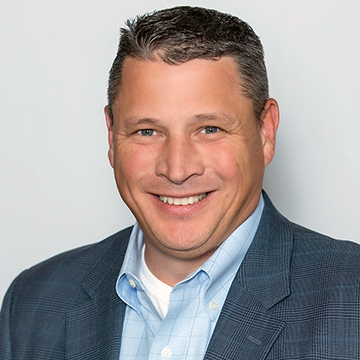Pro AV Labor Pains
Why is it so hard to find good help these days?

When it comes to labor in general, employers are all too aware that it’s a buyer’s market. Companies in every industry are struggling to fill gaps in the workforce, and Pro AV is no exception.
[Real Problems with Fake Products]
Recently, SCN sat down with companies that offer AV integration, managed services, and live event production to gain an understanding of how difficult finding the right talent is. Needless to say, the struggle is real in every area. Here are some of their observations and potential solutions.
Integration and Managed Services

As we all know, the pandemic taught people they could work remotely—and, in many cases, on a flexible schedule. Dave Van Hoy, president of Advanced Systems Group (ASG), an AV design, integration, and managed services firm headquartered in Emeryville, CA, said many workers are reluctant to give this up. “That’s definitely one of the challenges, a high degree of resistance to people returning, physically, to where they once were,” he explained.
Coupled with this is a shortage of younger talent. ASG, which supports a strong list of clients in the broadcast market, has trouble finding young people with these skills. “There is only a handful of schools in the United States today that turn out people with actual broadcast engineering as either a degree or part of their degree,” he noted.

On the managed services side of the spectrum, meeting support resources are hard to source. Chris Jamison, director of the managed services practice at AVI Systems, an AV design, integration, and managed services firm headquartered in Eden Prairie, MN, believes this is due to two things: Customers are downsizing their internal AV/IT teams, and an increasing number of the firm’s clients are bringing employees back to the office.
“It’s really creating this need for meeting support and training and adoption,” Jamison said. “For the most part, customers are asking for full-time [managed services staff], but there are some that are exploring part-time options to fill gaps in their workplace.”
A daily selection of the top stories for AV integrators, resellers and consultants. Sign up below.

Chance Turner, director of recruiting at AVI Systems, explained that the company strives to attract and retain talent by offering a healthy work environment. The firm’s Employee Stock Ownership Program (ESOP) is also appealing. “There’s a lot of value in the company being 100% employee-owned,” he said. “I think driving a positive company culture in which people know they’re valued for their contributions is extremely important."
Live Events
Arguably, live event production houses have faced the most challenges when it comes to hiring talent these days. At the height of the pandemic, there was no work, either driving people to seek out other employment opportunities in AV or leave the industry outright. Now, with live events back in full force, there aren’t enough skilled professionals to go around, especially in the freelance pool.

Mario Educate is president and CEO of OSA International, a live production and AV integration firm headquartered in Wood Dale, IL. He said his company’s biggest challenge right now is securing freelancers to support live events.
“Corporations or producers will delay getting the information out there, which makes it harder for all of us to lock in crews,” he explained. This leads to a scramble for local talent or an investment in airfare and accommodations to bring people to a job. “We’re running up against what everybody else is: finding talent that is available," he added. "And the better they are, the less they’re available.”

“If you’re really good at what you do and you’re very skilled, you have something squared away—either five companies that you work for all the time, or maybe a full-time gig—so those people are taken out of the realm,” explained Mel Baglio, director of operations at AV Chicago, a Chicago-based AV production and event management firm. As a result, she said companies have to seek out people with less experience and teach them the skills they need. “We’re trying to reinvent how to get people to come on board with us, how to train them, and how to get them up to speed so that they can start working with us more consistently.”
AV Chicago is partnering with schools to develop a new talent pool, and is seeking out training opportunities from manufacturers. For example, the company will send people for training at Shure’s nearby headquarters. Baglio said the firm will also approach those with transferrable skills, such as recording engineers or theater techs.
In general, referrals from employees and freelancers produce the most success. “I think that almost half of our company has been hired by word of mouth,” Baglio added. “We call it unicorn farming—finding those people that are fantastic, that fit with your dynamic, that fit with your culture and your team.”
What Workers Want
“It is a good time to be an AV professional and a challenging time to be an AV integrator,” noted Peter Hansen, economist at AVIXA.

While there is much discussion around the desire for flexibility (usually through hybrid or remote work) and the chance to work for an organization that aligns with their values, AVIXA’s research shows that earning a good salary remains the highest priority for job candidates. “Salary is the first reason we work—it’s the core of the equation,” Hansen said. “It’s the number one thing businesses should be thinking about. If you’re struggling to hire, think about your pay first. If you’re having retention issues, think about your pay first.”
That said, candidates are also seeking organizations that offer development opportunities and the chance for advancement. “If you’re a company that’s struggling to hire, and you’re maxing out the compensation that you can absolutely manage, the next place that I would think about are promotion pathways and really making that clear,” Hansen offered. In AV, he noted, a young professional can realistically envision being in the C-suite at some point, and integrators should make them aware of this.

And while it may not be the highest priority, many professionals want the ability to work remotely. In AV, of course, not all job roles allow for this, but Van Hoy said ASG is offering more flexibility than it did before the pandemic. He admitted this is a significant challenge, but one considerable benefit is that remote work expands the talent base.
“If the position can be remote, that means our pool of applicants can be much larger—we’re not limited to a certain geography,” Van Hoy said. However, he underlined, this depends on the specific role. “Some positions really can be done from home, as long as you have the right tools and procedures. Others really can’t.”
Talent Development (and Awareness)
To fulfill the need for talent, many AV companies are focusing on upskilling their labor force. Tom LeBlanc, executive director of the NSCA (National Systems Contractors Association) in Cedar Rapids, IA, cites IoT-driven tech as a key opportunity for AV integrators, but not all of them have the necessary skills to take advantage of this.

“Integrators are well-positioned to be at the epicenter of an IoT device explosion,” LeBlanc said. “The labor-related question the integration company leaders are asking themselves is: Are we ready for this IP endpoint environment? Are [our] people skilled for what we need today and tomorrow?”
If the answer is “no,” he said, integrators will lose out. “The industry and demand are moving ahead regardless of who is ready and who isn’t,” he noted.
According to LeBlanc, one of the biggest recruitment-related challenges AV integrators face is that people outside of the industry don’t know it exists. “It’s like we’re in a bubble,” he said. “We aren’t on the radar of the young professionals we want most.”
[NSCA Revises Labor Installation Standard Data for 2022]
This was driving factor behind the NSCA’s launch of its Ignite program. Designed to create industry awareness, Ignite provides resources to AV integrators to help them educate potential candidates about the careers that exist within the realm of Pro AV. “They can be the boots on the ground at career fairs, technical schools, and universities, casting a wider net and helping the industry to burst through the bubble,” he explained.

In conjunction with these efforts, AV firms should also solicit tech talent from related professions. “They need to be looking in the IT and MSP space and other adjacent technologies/industries,” said Mike Abernathy, director of business resources at the NSCA. “These candidates have the networking certifications and experience integrators need to install and manage the mission critical systems.”
Because good help is so hard to find, it’s wise for AV integration firms to concentrate on keeping the employees they already have. One way to achieve this is by providing them with the chance to grow their skill sets. Some organizations may do this by developing their own internal training programs, while others can take advantage of the courses offered by trade organizations and schools.
“It’s important to focus on how they can keep people interested and motivated,” Van Hoy said. “Pay for people’s time for them to go to junior colleges or trade schools to pick up relevant skills. We find that those are some of the things that have helped with retention the most.”
Skills in Demand
Some skills are harder to find than others. According to our experts, here are what Pro AV firms are struggling to find right now:
Live Events
• LED engineers
• Media server technicians
• PTZ camera operators
• vMix engineers
“You could have 150 stage hands on your roster, but you probably only have 7-10 really solid LED techs that exist in the city alone. And we’re not the only company in town, and other people have video walls,” said AV Chicago’s Mel Baglio. “We actually have to go out of city [or] out of state to bring people in, because that’s the only way that we can continue to do work for some of these bigger, heavy-hitting shows that we have.”
Integration and Managed Services
• Design engineers
• Field engineers
• IT skills
• Meeting services positions
• Networking skills
• Programmers
• Skilled installation technicians
“If you want to watch a system integrator’s eyes roll, just say, ‘Crestron programmer,’ and they’ll lay on the ground in a fetal position and cry,” said ASG’s Dave Van Hoy. “I don’t know how the market ended up this way, but there certainly aren’t enough of them. And the variation in skill is wide, and it’s hard to judge without seeing somebody actually do some work.”
Carolyn Heinze has covered everything from AV/IT and business to cowboys and cowgirls ... and the horses they love. She was the Paris contributing editor for the pan-European site Running in Heels, providing news and views on fashion, culture, and the arts for her column, “France in Your Pants.” She has also contributed critiques of foreign cinema and French politics for the politico-literary site, The New Vulgate.
